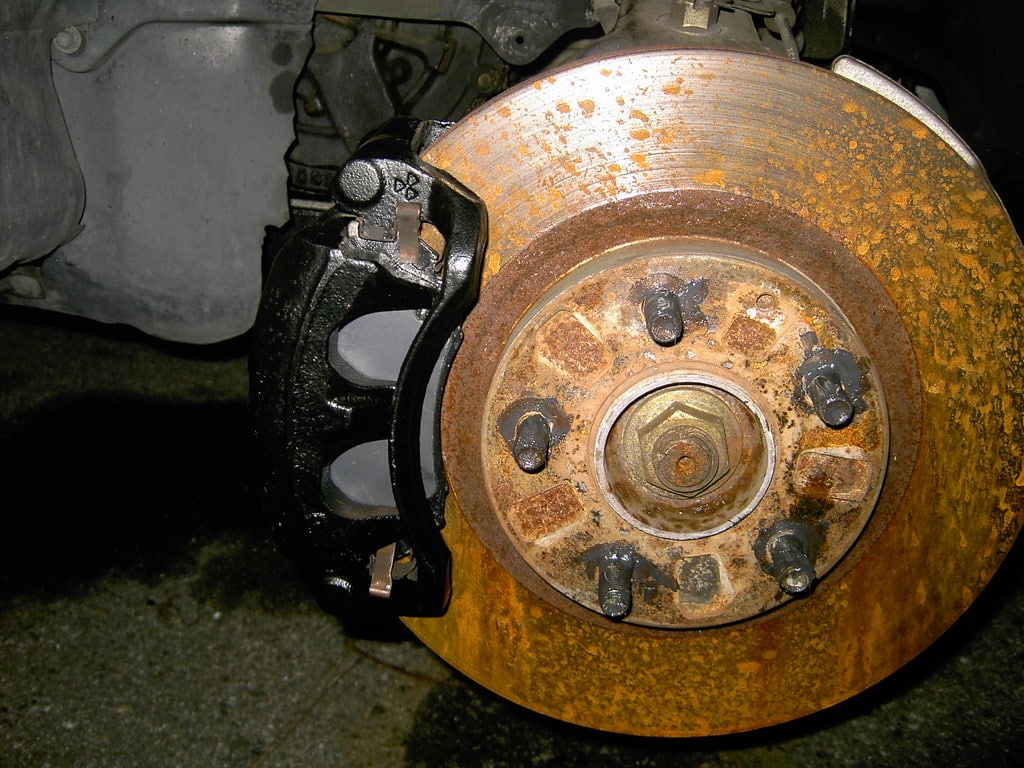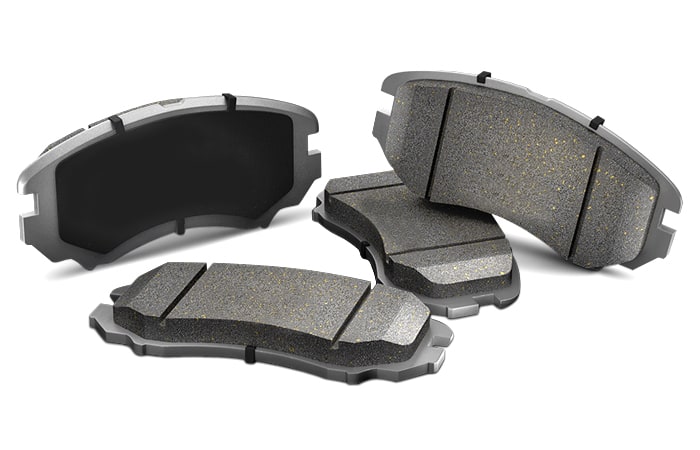The brake pad is a seemingly simple yet complex piece of mechanism. When a car brakes, the brake disc, and pad have a direct effect on the car, which can help your car stop at the right time to avoid unnecessary accidents. Among them, if the quality of the brake pads is bad, it will directly affect the performance of the brake. This is the reason why you should choose for your car good brake pads to make sure of the effectiveness of the brake. Drivers can be confident on every journey when the brakes work smoothly and efficiently.
Anyone who owns a car knows that brake pads are one of the most wear-resistant parts. So in addition to replacing them at the right time, you need to know how to choose the most appropriate pads for your car.
Contents
Dangers Of Fake And Poor Quality Brake Pads

You wouldn’t risk cheap tires in your car, so why risk using cheap brake pads to fix your brakes? On the market, there are still countless types of poor quality brake pads and people often buy fake brake pads without paying attention. However, the result of this problem can seriously affect the performance of the brake system.
- Extend the braking distance, when the brakes are urgent, the vehicle cannot be stopped in time, causing an unnecessary accident.
- It is easy to cause the wheels to lock up and lose the ability to control the direction.
- There is noise when you brakes
- Bad pads can affect the rotors. If you have poor-quality brake pads that lead to splintering, cracking, and falling off the rotor there is no pressure applied to the brake that will now be placed directly on the rotor. Make the rotor warp, crack, and eventually fail altogether.
- Damaged the tires by bad brake pads. If the brakes fail due to worn/corroded brake pads, rotors or calipers, it can cause you to step on the brakes, leading to unbalanced tires and ultimately wearing out faster than normal.
How To Choose Good Brake Pads?
How choose good brake pads for the vehicle is an important issue that affects the performance and safety of your car. Choosing the right pads is becoming increasingly difficult due to the wide range of brake pad types. Not all brake pads are designed the same. And each is made with its own materials and processes that also determine performance, noise, price, warranties, and the ability to do them consistently and safely throughout their “lifetime”. Lifespan is a common prerequisite for many buyers, as it saves you money.
Brake pads should always be replaced before completely wearing and as recommended by the manufacturer to maintain optimal stopping power. It will reduce damage to other brake components such as brake calipers and brake discs. To choose the high quality brake pads you need, pay attention to the following aspects:
Driving condition
The brake pad material will depend on your driving style and requirements. Buying replacement pads will require you to choose the material they are made of. At this point, you need to determine the severity of the brake need. The best brake pads for your car depend on what you want them to do. Pads contain a sacrificial friction material bonded to a metal pad. Every time you use the brakes, a little bit of that material wears out. How much to wear depends on some factors. For example, sudden braking, and frequent abrupt stops, are the cause of your brake pads to wear out faster. The same goes for driving on dirt roads or other extreme conditions.
Maximum temperature
Good brake pads should be able to work in all weathers, whether dry, wet, muddy, warm, or cold.
Maximum temperature: This is the highest temperature the brake pads can withstand before becoming unsafe. During normal use on the street, the brake pads will usually not see a temperature rise of more than 200C or 392F. However, track days are a different story, with temperatures possibly reaching as high as 1,000F because the brakes are applied more often and more aggressively.
Friction response to temperature
Drivers need to note how much force is applied to the pedal to get the same response during emergency braking compared to normal braking.
The lifespan of brake pads
Brake pads are prone to wear. Do you need to consider how long the brake pads are designed to last? Pads can last about 40,000 miles on average, but the range is pretty wide: Typically, their lifespan range from 20,000 to 65,000 miles. Many factors affect the life of your brake pads, from your driving habits to the brake pads material. For example, drive slower and you’ll prolong the life of your brake pads.
Brake pads material
Many drivers wonder “what type of brake pads are better for my car?” The type of materials you use depends in part on What’s the type of vehicle you drive. Do you want to carry the kids around in a pickup truck or SUV? Or are you carrying heavy things on a truck? Brake pads are typically made of one of three different materials: organic, ceramic, and semi-metallic, each with its own distinct characteristics and advantages & disadvantages.
>> Read more: The Differences Between Brake Shoes vs Brake Pads
What Type Of Brake Pads Should I Choose?

There are 3 types of brake pads: organic brake pads, ceramic brake pads, and semi-metallic. These 3 types of brake pads are rated as highly durable, they are not only used for daily commuting needs but are also considered the best brake pads for towing. Manufactured using different materials and specialized processes, each brake pad has different performances and applications.
Ceramic brake pads
Manufactured in the first half of the 90s of the last century, a few automakers have begun to use ceramic brake pads. This type of brake pad is appreciated for its smoothness. When used, it makes almost no noise. Compared with organic brake pads “are ceramic brake pads better?” Ceramic brake pads are much more dominant in terms of dust reduction, lower wear, reliable operation, wide temperature range as well as driving conditions.
Ceramic material and copper construction make the brake mechanism work well even at high temperatures and recover faster. The ceramic structure absorbs sound and vibrations within the frequency range that humans hear.
Organic brake pads
When it was first invented, brake pads were made of asbestos. However, after a period of use, experts have discovered that this is a potentially carcinogenic compound if exposed for a long time. To overcome this dangerous problem, organic brake pads were manufactured. This brake pad uses safer materials such as a mixture of fibers, carbon compounds, rubber, glass, or fiberglass … boned together by resin. This type of brake pad creates only a moderate amount of friction and does not generate too much heat. Therefore, the car will always operate smoothly, without making much noise when braking. Most reputable and high-end manufacturers use organic brake pads when building cars, but this only applies to more than 50% of new cars. Meanwhile, other car manufacturers use different types of brake pads in their production lines.
However, organic brake pads tend to wear out faster, so they need to be replaced regularly. In addition, this type of brake pad only works best in low-temperature ambient. When the weather is too extreme or braking too strong which will generate high heat, the performance of the brake pads will decrease significantly.
Semi-metallic brake pads
The last type of brake pad friction material is called “semi-metallic” because 30-65% of its weight is metal. People use a lot of different metals from copper, and iron to steel to make this pad. The rest of the friction surface is made up of fillers, and customs agents. And a variety of other materials are needed to enhance the performance and durability of the brake pads. Semi-metallic pads are extremely popular in the automotive industry and are considered the most versatile brake pad on the market. These brake pads obviously have many limitations, but many people believe that using semi-metallic brake pads is still the best choice. It all depends on its application.

Are ceramic brake pads better than semi-metallic ones?
Semi-metallic vs ceramic brake pads which one you should choose. It is very difficult to give an exact answer to this question. Before the advent of ceramic pads, semi-metallic brake pads were considered the best brake pads on the market. Of course, usefulness also fades with new technology, but semi-metallic car brake pads can still compete with many other high-end products, according to some automakers.
Brake pads made of semi-metallic can perform better and are more economical, although they can be stiff and noisy during use.
Ceramic pads possess many advantages, but the production cost of this type of brake pad is more expensive compared to all brake pads. In addition, the ability of ceramic to absorb heat evenly is not as much as other materials. This causes heat from the braking process to escape from the pads and into the rest of the system, causing wear and tear on related components. This type of brake pad is also not considered the best choice. When driving in very cold weather conditions or on the track. They can also bite less and work less performance, meaning that when you first hit the brakes, especially in cold weather, you’ll notice less immediate stopping power.
if you regularly use your car for more strenuous work – such as towing on mountainous paths – you may be better off opting for ceramic, full-metal, or premium brake pads.
>> Read more: How Many Brake Pads On A Car?
Notes You Should Consider Before Buying Brake Pads
No vehicle can be considered safe if brake pads are faulty or worn out. So besides paying attention to the characteristics of brake pads, you also need to pay attention to some factors when buying.
Find a trusted brand: To ensure the quality and origin of the brake pads, you should choose to buy products from reputable suppliers in the market.
Check warranty: Many manufacturers (or retailers) provide warranties on brake pads. While they are designed for gradual wear and tear. If they come with a mileage warranty, that’s a good sign of the service.
Don’t ignore the certifications. There are two generic brake pad certifications included: Differential Effectiveness Analysis (D3EA) and Brake Effectiveness Evaluation Procedures (BEEP).
Final Thoughts
Like tires, brake pads are prone to wear out and need to be replaced immediately. And bad brake pads can cost you more in the long run. When comparing brake pad brands to use on your vehicle. You have to consider more than just the type of brake pad.
You also have to consider the key characteristics of each brand, their lifespan, and their quality. The last thing you want to do is buy a lower-end brand of poor quality. And have them fall on you and seriously damage your car. There are many ways poor-quality brake pads can damage various parts of your vehicle. For example, bad brake pads can damage rotors, calipers, and tires if not handled immediately.



